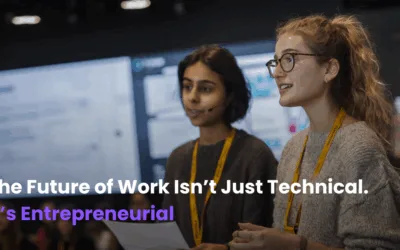Whether we’re running a hackathon, launching an accelerator, delivering an AI consulting sprint, or kicking off a new service design project, one factor consistently shapes outcomes: the structure and composition of the team. Time and again, research confirms that diverse teams outperform homogenous ones—yet we still see team setups that unintentionally limit their own potential.
That’s often because we focus on optimising business units or leadership structures, but overlook the design of teams themselves. High performing teams don’t happen by chance—they’re built deliberately. This becomes especially clear in short-term or innovation-focused projects, where teams need to form fast, deliver impact, and disband quickly.
In the startup world, we often design small, agile teams around roles:
-
Hackers – technical specialists and engineers
-
Hipsters – designers and creative thinkers
-
Hustlers – business development and commercial drivers
-
Humanitarians – domain experts and those with lived experience
But role-based diversity is just the beginning. Truly high performing teams are shaped by multiple dimensions of diversity—demographics, neurodiversity, gender, cultural background, accessibility, and professional experience. When this rich mix is combined with clear goals, aligned values, and a psychologically safe culture, teams aren’t just productive—they’re transformative.
And yet, even with the perfect structure and strategy, one ingredient remains essential: kindness. High performing teams thrive when respect, empathy and curiosity are part of the operating model—not just the culture deck.



